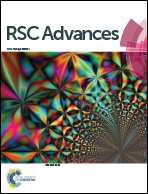A simple preparation method and characterization of epoxy reinforced microporous phenolic open-cell sound absorbent foam
Abstract
A series of micro-porous phenolic open-cell sound absorbent foams reinforced by epoxy resin were fabricated by a physical foaming method. Compound emulsifiers consisting of anionic and non-ionic surfactants were physically blended at high speed with modified resols, foaming agent and a mixed acid curing agent. The viscosity, surface tension, and gel permeation chromatography (GPC) properties were characterized. The fabricated foams were characterized with regard to their pore size distribution, water absorption, sound absorption, and mechanical and thermal properties. Surface tension and porosity analysis demonstrated that the anionic surfactant, sodium dodecyl sulfonate (SDS), promoted the formation of homogeneous micro-pores. Additionally the open cell porosity reached up to 90%. The open-celled pore structure and cell size distribution revealed by scanning electron microscopy (SEM) demonstrated that more homogeneous and smaller open cells existed with an increasing dosage of epoxy. The sound absorption properties were also increased significantly by adding the epoxy resin, even reaching about 95%. The micro-pore structure and cell distribution controlled by the content of epoxy resin and the ratio of SDS/Tween-80 greatly improved the mechanical strength of the phenol–formaldehyde resin (PF).


 Please wait while we load your content...
Please wait while we load your content...